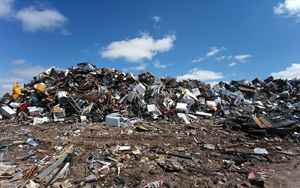(Finance) – To achieve the objectives set by the European package on the circular economy for 2035, our country also needs new plants for the energy recovery of non-recyclable fractions. This is what emerges from the study “Urban waste, current plant needs and 2035”, created by Utilitalia (the Federation of water, environmental and energy companies), now in its fourth edition and presented on the occasion of Ecomondo Fair in Rimini.
The study is based on data provided by 2022 report of ISPRA on Urban Waste which refers to 2021 data. The current urban waste treatment plants are numerically insufficient and poorly located across the territory, forcing our country to continuously travel waste between regions and to still resort excessively to disposal in landfill. Without a decisive turnaround it will be impossible to achieve the EU targets which provide for the achievement of 65% effective recycling of the total waste collected within 12 years and a use of the landfill for a share not exceeding 10%: at the moment we have an effective recycling equal to 48.1% and a resort to disposal equal to 19%.
The study concerns the systems of anaerobic digestion for organic waste treatment and energy recovery for non-recyclable waste. For the former, on which Utilitalia has carried out actions for years to promote their implementation and on which the National Waste Management Program has also intervened, a more precise analysis of any actual residual needs can only be done later in time, since you are registering the opening of new plants and the adaptation of existing ones. However, the prospect for energy recovery still remains critical.
Considering the currently installed capacity, if we want to achieve the European objectives and cancel the export of waste between the areas of the country, the plant requirements relating to waste-to-energy plants amount to approximatelyto 2.35 million tonnes. On an annual basis and specifically, the North will have a deficit of 150 thousand tons; the Center will need to process a further 1.15 million tonnes of waste to energy and the South will have an energy recovery requirement of 550 thousand tonnes; for Sicily the deficit would be 550 thousand tons and Sardinia would have a deficit of 150 thousand tons. “The territories that record the highest percentages of separate waste collection – explains Filippo Brandolini, president of Utilitalia – are those in which the greatest number of plants are present. This shows that separate collection for recycling and systems are not two opposing elements, but represent two sides of the same coin. While as regards organic waste we see the opening of new anaerobic digestion plants and many projects under development, also thanks to the PNRR, as regards the energy recovery of non-recyclable waste, much remains to be done, without prejudice to the importance of the path undertaken for Rome as Capital City”.
The report indicates that the residual life of active landfills is running out: for the North there are still 4/5 years ahead; for the Center 3/4 years; for the southern peninsula 2/3; for Sardinia 1/2 years and for Sicily approximately 1 year.
The shortage and poor location of the plants is the main cause of waste traveling along the Peninsula, with important costs in economic and environmental terms. To transport the 3.7 million tons of treated waste to regions other than those of production, 160 thousand truck trips were necessary in 2021, equal to 89 million kilometers travelled: this resulted in the additional emission of over 55,000 tonnes of CO2.
